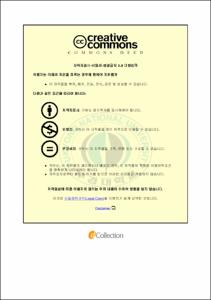부산지역 대학생의 염분섭취 관련 식행동 및 대학급식소 메뉴의 나트륨량 조사
- Alternative Title
- Dietary behavior related to salt intake of students and sodium contents in meals of university foodservice in Busan
- Abstract
- The study examined high-sodium dietary intake and awareness of low sodium or saltiness of among male and female university students in Busan, as well as the general preference for salty food that can influence students' health condition. The study also measured the actual saltiness of university foodservice meal, thereby providing data that can serve as a foundation for the improvement in university students' dietary behavior and the development of low-sodium menus. Four cafeterias were selected, two under self-operated and contracted management by universities in Busan ; 977 participants were recruited to complete a survey. One serving of each of 98 main and sub-main menu items was calculated to measure the amount salt, allowing the sodium level to be calculated. Statistical analysis was conducted using SPSS v18.0.
In the sample, 512 males (52.4%) and 464 females (47.5%) responded, and the average age was 23.4 years. The frequency of use of the university cafeteria was 3 to 4 visits per week (38.3%) for male students and 1 to 2 visits (39.9%) per week for female students, revealing a statistically significant difference according to sex(p<0.01). In terms of the saltiness of the food consumed in the university cafeterias, male students scored 3.35/5.00 points while female students scored 3.39 /5.00 points, but no significant difference was shown. Regarding the usual food saltiness preference, male student scored 3.23/5.00 points, while female students scored 3.09/5.00 points, exhibiting a significant difference(p<0.05). Regarding the high-sodium dietary intake of university students, male students scored 3.15/5.00 points, while female students scored 2.79/5.00 points for the question "I tend to eat remaining soups or noodle broths until the last drop," indicating that male students ate significantly more salty water in soups or broths(p<0.001). The low-sodium awareness item showed that male students scored 3.25/5.00 points, while female students scored 3.39/5.00 points, revealing that female students had significantly higher awareness(p<0.001). Regarding dining out or delivery food preferences, students living with family scored 3.11/5.00 points, while students linimg alone scored 3.47/5.00 points, signifying that students renting accommodations consumed significantly more food from restaurants(p<0.001).
The results of sodium measurement in 98 menu items provided in university cafeterias in the Busan showed that noodles (305.87) had the highest sodium level, followed by stew (290.26) > fried (280.65) > normal rice (276.56) > seaweed-rolled rice (275.55) > rice topped with meat (261.82) > rice mixed with vegetables and meat served in a bowl or hot stone pot (260.39), and pork cutlets as a main meal (229.50±). Only 11 (11.2%) out of 98 menu items satisfied the criterion of representing a third (666mg) of the daily sodium intake limit (2,000 mg) in the Korean Dietary Reference Intakes, while there were 23 menu items (23.4%) containing more than 2,000 mg of sodium.
According to the present study results, the sodium contents in menu items provided in university cafeterias were higher than the Korean Dietary Reference Intakes. University students scored 2.93 out of 5.00 points in terms of awareness of low sodium foods and 3.57 out of 5.00 points in terms of the need to consume low sodium food, which was a low level.
University students are entering into the adult stage of life and it is very important to maintain good health during this period to prevent the chronic diseases that are prevalent in middle age. Therefore, more attention has to be paid to menu development in university foodservice with a view to lowering students' sodium intake.
- Issued Date
- 2014
- Awarded Date
- 2014. 2
- Type
- Dissertation
- Publisher
- 부경대학교
- Alternative Author(s)
- Kang, min ji
- Affiliation
- 교육대학원
- Department
- 교육대학원 영양교육전공
- Advisor
- 류은순
- Table Of Contents
- 목 차
Abstract
Ⅰ. 서론
1. 서언 1
2. 연구의 목적
Ⅱ. 이론적 배경
1. 대학 급식
2. 대학생의 식생활 형태
3. 나트륨과 건강
Ⅲ. 연구대상 및 방법
1. 연구대상 및 기간
(1) 염분 조사 대상 급식소 선정 및 기간
(2) 학생의 염분에 대한 식생활 및 인식 조사
2. 연구내용 및 방법
가. 대학 급식소의 메뉴 유형과 나트륨 함량
나. 학생의 염분에 대한 식행동 및 인식조사
다. 설문지 구성
(1) 일반사항
(2) 염분 섭취 식행동
(3) 짠맛에 대한 인식
(4) 저염식 및 저염제품 개발에 대한 인식
4. 자료 분석
Ⅳ. 연구 결과
1. 조사대상 대학급식소의 메뉴유형
가. 대학급식소 메뉴유형
나. 주․부식류 종류
2. 대학급식소 메뉴의 염도와 나트륨 함량
가. 메뉴유형에 따른 염도와 나트륨 함량
나. 주⋅부식류에 따른 염도와 나트륨 함량
다. 대학급식소 메뉴와 식품의약품안전처 조사 나트륨 함량과의 비교
3. 대학생의 염분 섭취 관련 식행동
가. 조사대상자의 일반사항
나. 식당이용빈도
다. 학생들의 짠맛에 대한 인식
1) 일반사항에 따른 대학급식소 메뉴와 자신의 짠맛 정도
2) BMI에 따른 대학급식소 메뉴와 자신의 짠맛 정도
라. 대학생의 염분 식행동
1) 일반사항에 따른 대학생의 염분 식행동
2) BMI에 따른 대학생의 염분 식행동
마. 대학생들의 저염 및 저염식단 개발에 대한 인식
1) 대학생들의 저염식 및 저염제품에 대한 인지 여부
2) 대학생들의 저염과 저염식단 개발에 대한 인식
3) BMI에 따른 저염과 저염식단 개발에 대한 인식
Ⅴ. 요약 및 결론
Ⅵ. 참고문헌
Ⅶ. 부록
- Degree
- Master
- Files in This Item:
-
-
Download
 부산지역 대학생의 염분섭취 관련 식행동 및 대학급식소 메뉴의 나트륨량 조사.pdf
기타 데이터 / 1.08 MB / Adobe PDF
부산지역 대학생의 염분섭취 관련 식행동 및 대학급식소 메뉴의 나트륨량 조사.pdf
기타 데이터 / 1.08 MB / Adobe PDF
-
Items in Repository are protected by copyright, with all rights reserved, unless otherwise indicated.